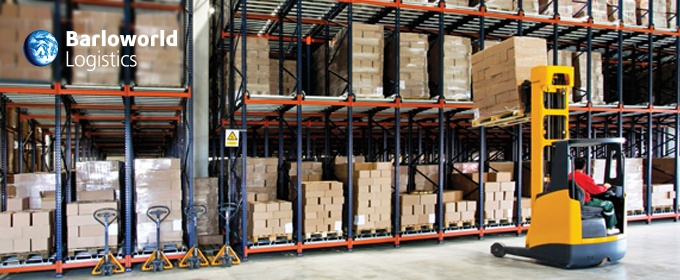
Setting up a new warehouse seems relatively straightforward. Average stock holding equates to a specific square meterage, perhaps increased to accommodate for peak demand, and a location in proximity to your head office – simple! There is no doubt that this type of matchbox calculation touches on essential aspects of a warehouse such as space and location, but there are many more factors to consider. A fundamental question to ask when considering a new warehouse space is not how much cost can my business save per square meter, but instead, how can our inventory be stored and distributed most efficiently to meet your client expectations and demands.
Where do I even begin?
The ideal starting point when considering a new warehouse is to critically assess your customer network, and determine centers of gravity that are most viable. Such network planning models take both inbound and outbound logistics into account from both a cost and efficiency point of view. Factors such as expected delivery times or transit times from a port can impact whether a warehouse should be closer to an organisations client base or source of goods. Once an ideal geographic location is determined, more local factors such as road network within an area, zoning permissions and cost per square meter come into play.
What should I consider?
A vital factor to consider, while not directly impacting cost, is that of availability of local skilled labour. If a location is deemed ideal in terms of network efficiency but demands a high level of transient labour, any benefit gained in terms of expenses may be eroded through training and on-boarding costs of a continually fluctuating workforce. Other human resource issues that may arise include delays in operation due to unreliable transport or under-resourced facilities due to a simple lack of skilled local staff.
Is that all?
The type of inventory plays a significant role when deciding on the right facility. Cold storage, hazardous goods or flammable products all have unique requirements in terms of building set up. From a safety perspective, for example, dangerous goods require emergency access points or access to a water supply in the event of a fire. Food products need the implementation of appropriate cooling systems, which require not only space but also functional interior configurations to maintain a particular temperature regime. The size of individual stock items, the flow of goods, access for both delivery and collection vehicles, as well as a variety of health and safety requirements impact the optimal layout of a warehouse, and ultimately the size and location.
What else?
Growth potential is a strategic guide when selecting an appropriate space. This is a juggling act between current capacity relevant to cost, versus the ability to rapidly upscale, should demand increase. Moving warehouses is a costly, and disruptive process and the longevity of a facility should be considered. Flexibility in terms of racking and layout should be an essential consideration, aligned to an organisations growth ambitions when laying out and selecting a warehouse.
Finding the perfect warehouse is by no means easy, but is vital to the performance of the entire supply chain. The process is impacted by a wide range of factors, and detailed supply chain analysis can provide the information necessary to make an informed decision. Partnering with experts allows for the design and management of customised warehouse solutions that deliver bottom-line benefits by helping you to be more productive, your organisation more efficient, and your business agiler.
Designed for today but with the future in mind, Barloworld Logistics solutions are based on a comprehensive range of bespoke management systems and processes, which include cross-docking, racking, shelving, pick-and-pack, and track and trace capabilities. Consistent quality, operational excellence and on-going innovation are how we achieve a reduction in inefficiencies, enhanced consumer value, improved cash flow and profits for your business through smart warehouse design
Read more about setting up a warehouse



